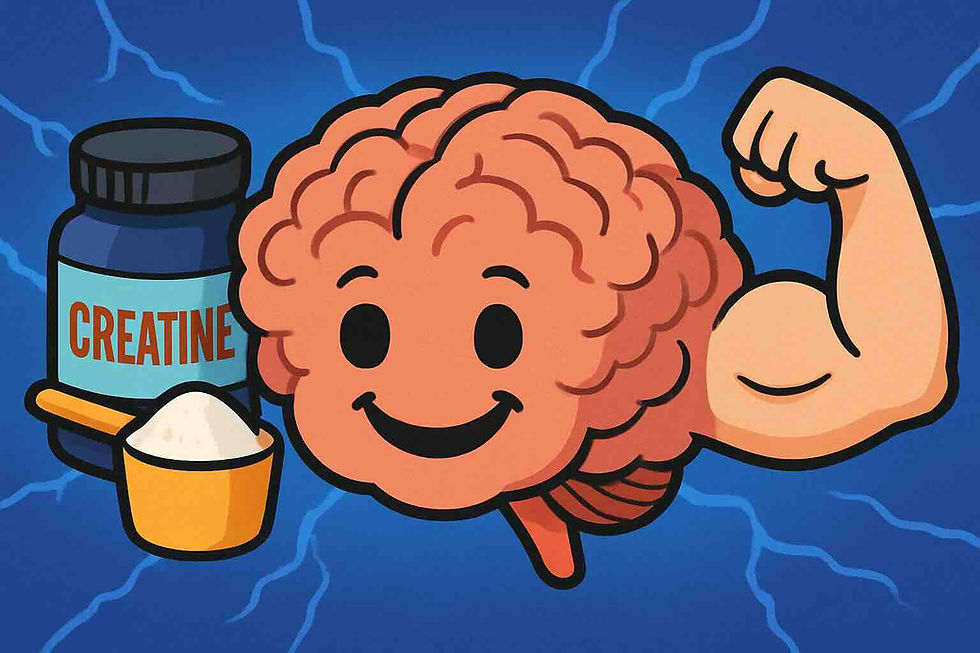7 Science-Backed Ways to Lower Blood Pressure Naturally
- Dmitri Konash

- 3 minutes ago
- 4 min read
From slow breathing to VO2max interval training these techniques are proven to lower BP
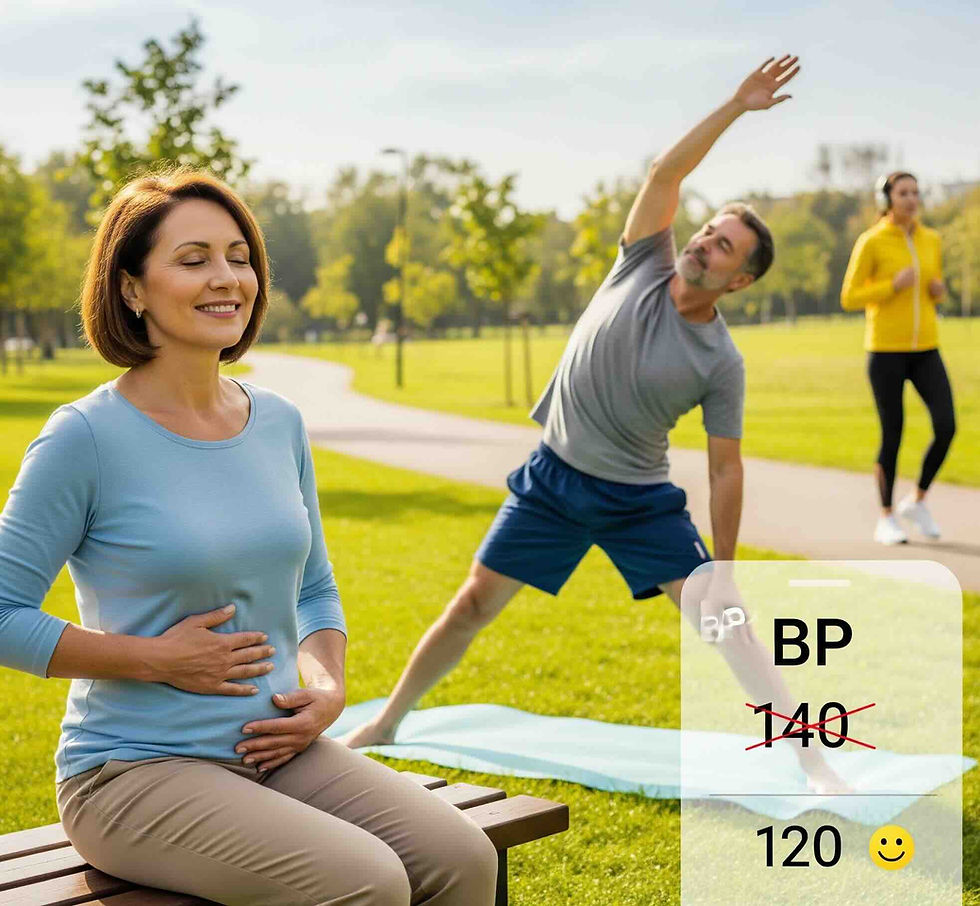
High blood pressure doesn’t have to mean a lifetime of complicated interventions. Research shows that small, repeatable habits — done consistently — can produce real reductions in systolic and diastolic BP. The seven tactics below are backed by meta-analyses and large trials, are low-risk for most people, and can be done at home without expensive gear.
Click any tactic in the list below to jump to details:
1. Slow Breathing Exercises
The quick win: Just 5–10 minutes/day of slow, diaphragmatic breathing can lower systolic BP by about 5–7 mmHg.
Why it works: Slow breathing (5–7 breaths/min) boosts vagal tone, calms the sympathetic “fight or flight” system, and improves vessel flexibility.
How to do it:
Sit comfortably.
Inhale through your nose for 4–5 seconds.
Exhale gently for 5–6 seconds.
Repeat for 5–10 minutes.

Research snapshot [1]: Meta-analysis of 15 studies found SBP reduced by 7.06 mmHg and DBP by 3.43 mmHg after regular slow-breathing practice.
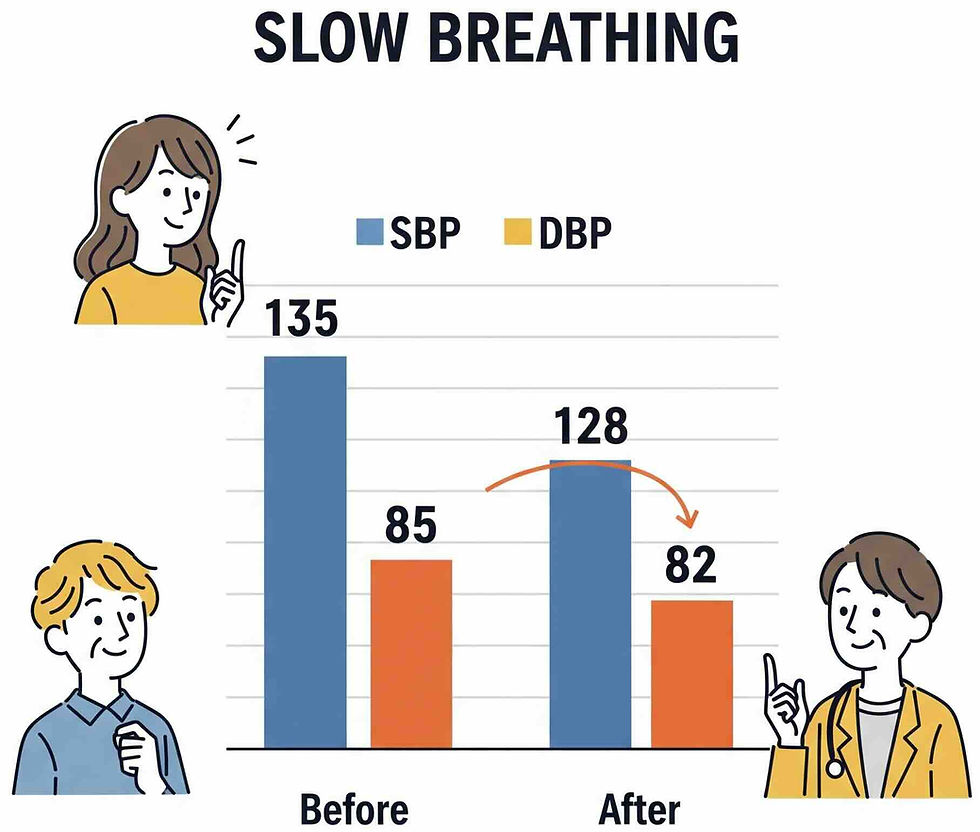
“Think of it as a mini-vacation for your blood vessels — no suitcase required.”
2. Meditation & Mindfulness
The quick win: Mindfulness and meditation programs lower systolic BP by 3–5 mmHg in adults with elevated BP.
Why it works: These practices reduce stress hormones, improve sleep, and support healthy habits — all contributors to lower BP.
How to do it:
Try a 10-minute guided meditation daily.
Use apps, YouTube videos, or join a local mindfulness course.

Research snapshot [2]: Modified MBSR programs in trials lowered SBP by ~4 mmHg.
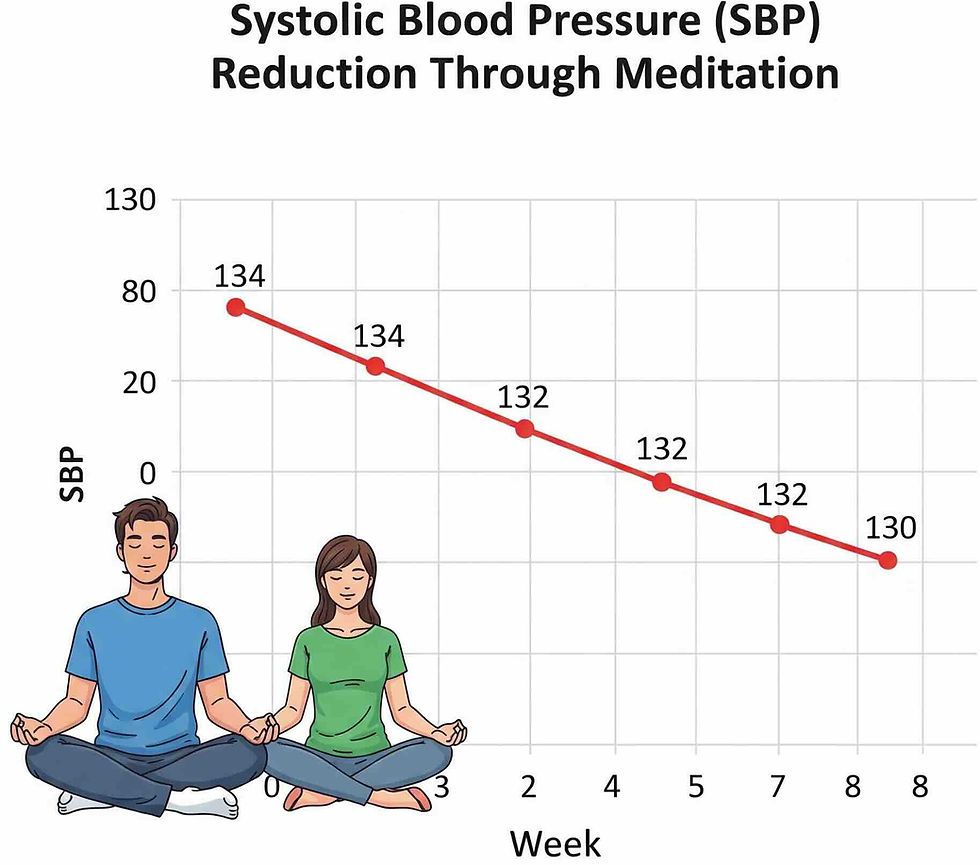
“If your mind is a snow globe, meditation is putting it down until the flakes settle.”
3. Walking
The quick win: Brisk walking 30–45 min, 3–5×/week, can drop systolic BP by ~4–6 mmHg.
Why it works: Walking improves artery function, insulin sensitivity, and lowers resting sympathetic activity.
How to do it:
Brisk pace = you can talk, not sing.
Start with 10–15 min and build up.

Research snapshot [3]: Meta-analyses show consistent 4–6 mmHg systolic reductions from walking programs in adults with elevated BP.

“Every step is a tiny pressure release valve.”
4. Stretching & Yoga
The quick win: Gentle yoga and stretching can reduce systolic BP by 4–6 mmHg.
Why it works: Combines physical movement, breath work, and relaxation — a triple win for vascular and nervous system health.
How to do it:
20–45 min, 3×/week.
Focus on slow transitions, breathing, and posture.

Research snapshot [4]: Systematic reviews report mean SBP reductions of ~5 mmHg in pre-hypertensive and hypertensive adults.

“It’s like strength training for your calm.”
5. Isometric Exercises
The quick win: Short sessions (e.g., handgrip or wall-sit) 3×/week can reduce SBP by ~6 mmHg.
Why it works: Static contractions train vessels to respond better to changes in blood flow and pressure.
How to do it:
Handgrip: Squeeze at ~30% max effort for 2 min × 4 sets, rest between.
Wall-sit: Hold for 2 min, repeat 4 times.
Don’t hold your breath!
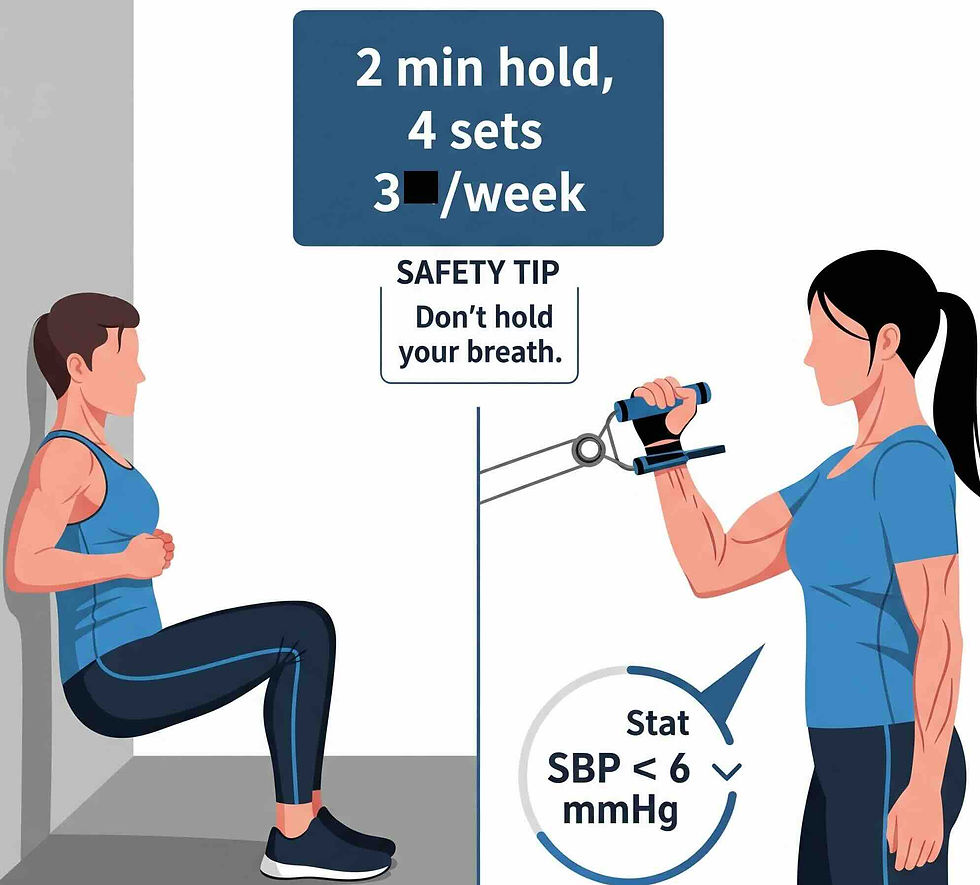
Research snapshot [5]: Meta-analyses show pooled SBP reduction of 6 mmHg; DBP reduced by 3 mmHg.

“Strength without movement, benefits without sweat.”
6. Listening to Calming Music
The quick win: Relaxing music can lower systolic BP by 4–6 mmHg and heart rate.
Why it works: Music can shift your nervous system into a more relaxed state, lowering arousal and vascular resistance.
How to do it:
Build a calming playlist: classical, ambient, or soft acoustic.
Listen for 20–30 minutes before bed or before stressful events.
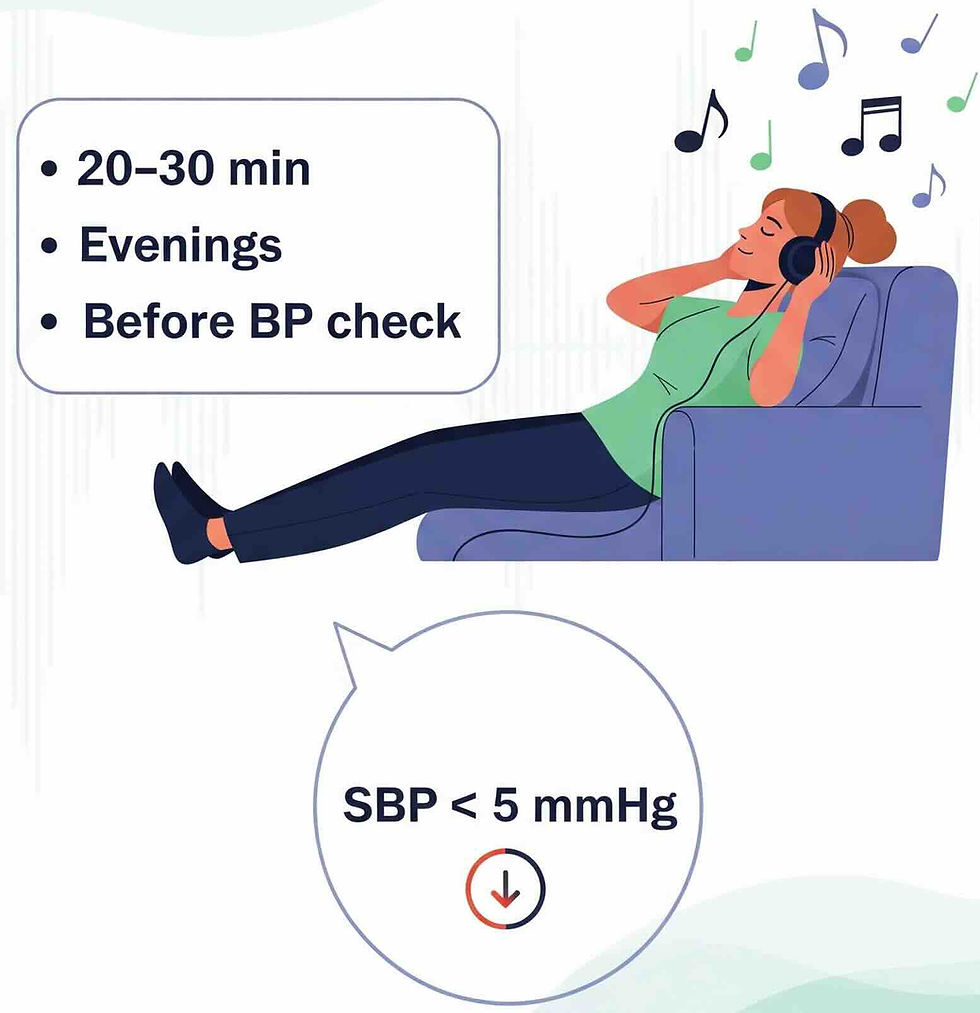
Research snapshot [6]: Music therapy meta-analysis shows ~5 mmHg systolic drop in adults with hypertension.
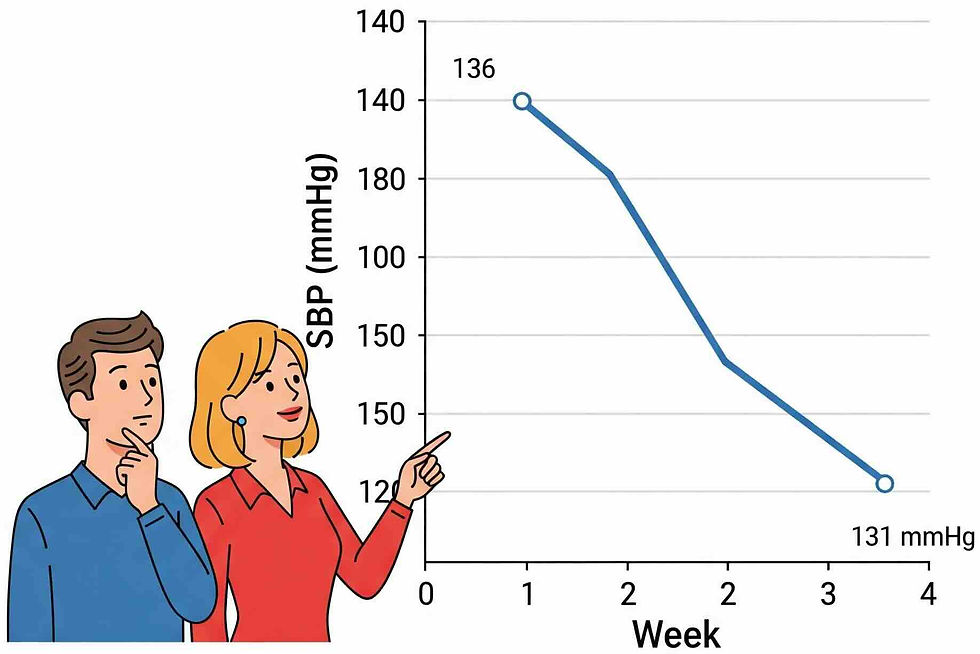
“Sometimes the best medicine is a good melody.”
7. Bonus: Improving VO₂max
The quick win: Better aerobic fitness (VO₂max) means lower long-term BP — around 4–6 mmHg reduction.
Why it works: Aerobic training improves vessel health, heart efficiency, and lowers resting BP over time.
How to do it:
3–5 sessions/week aerobic activity.
Mix steady moderate sessions with occasional higher intensity.
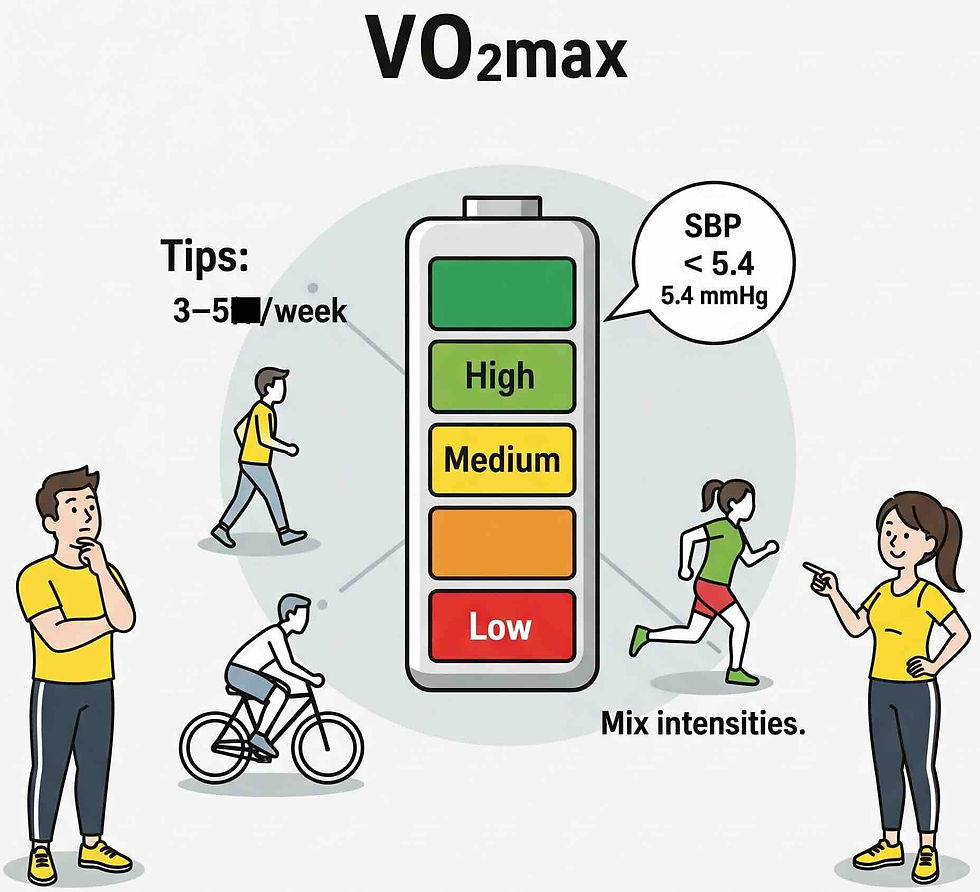
Research snapshot: Pooled aerobic training studies show mean SBP drop of 5.4 mmHg with VO₂max improvements.

“The fitter your heart, the less pressure it feels.”
Your 30-Day Mini-Plan
Daily: 5–10 min slow breathing.
3×/week: Brisk walking + isometric training.
2×/week: Yoga or stretching.
Whenever needed: Calming music or meditation.
Reassess your BP after 4 weeks — you may see measurable change sooner.
Call to action:
Which one will you try first? Screenshot your favorite tactic and commit to it for the next two weeks — then see what your BP says. Download and try our free blood pressure app BreathNow which includes guided videos for all these exercises and also calming music.

Safety note: These methods are generally safe for most people but check with a healthcare provider before making changes to your exercise routine or medications.


